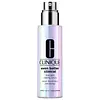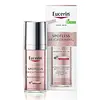What's inside
What's inside
 Key Ingredients
Key Ingredients

 Benefits
Benefits

 Concerns
Concerns

 Ingredients Side-by-side
Ingredients Side-by-side

Water
Skin ConditioningDimethicone
EmollientIsododecane
EmollientYeast Extract
Skin ConditioningButylene Glycol
HumectantPolysilicone-11
Niacinamide
SmoothingAscorbyl Glucoside
AntioxidantPEG-10 Dimethicone
Skin ConditioningPEG-6
HumectantAcetyl Glucosamine
Skin ConditioningGlycerin
HumectantSodium Hyaluronate
HumectantSqualane
EmollientCholesterol
EmollientHelianthus Annuus Seed Extract
Skin ConditioningTrametes Versicolor Extract
Glycyrrhiza Glabra Root Extract
BleachingHordeum Vulgare Extract
EmollientOryza Sativa Bran Extract
Skin ConditioningTriticum Vulgare Germ Extract
Skin ConditioningCucumis Sativus Fruit Extract
EmollientCamellia Sinensis Leaf Extract
AntimicrobialCaffeine
Skin ConditioningSalicylic Acid
MaskingIsohexadecane
EmollientPropylene Glycol Dicaprate
EmollientGlycyrrhetinic Acid
Skin ConditioningDimethoxytolyl Propylresorcinol
AntioxidantCaprylyl Glycol
EmollientStearamidopropyl Dimethylamine
EmulsifyingPhosphatidylcholine
EmulsifyingSorbitan Oleate
EmulsifyingPolysorbate 20
EmulsifyingPolysorbate 80
EmulsifyingStearic Acid
CleansingHexylene Glycol
EmulsifyingTromethamine
BufferingCitric Acid
BufferingAcrylamide/Sodium Acryloyldimethyltaurate Copolymer
Emulsion StabilisingAmmonium Acryloyldimethyltaurate/Vp Copolymer
Tocopheryl Acetate
AntioxidantMagnesium Ascorbyl Phosphate
AntioxidantBHT
AntioxidantSodium Citrate
BufferingDisodium EDTA
Nylon-12
Phenoxyethanol
PreservativeWater, Dimethicone, Isododecane, Yeast Extract, Butylene Glycol, Polysilicone-11, Niacinamide, Ascorbyl Glucoside, PEG-10 Dimethicone, PEG-6, Acetyl Glucosamine, Glycerin, Sodium Hyaluronate, Squalane, Cholesterol, Helianthus Annuus Seed Extract, Trametes Versicolor Extract, Glycyrrhiza Glabra Root Extract, Hordeum Vulgare Extract, Oryza Sativa Bran Extract, Triticum Vulgare Germ Extract, Cucumis Sativus Fruit Extract, Camellia Sinensis Leaf Extract, Caffeine, Salicylic Acid, Isohexadecane, Propylene Glycol Dicaprate, Glycyrrhetinic Acid, Dimethoxytolyl Propylresorcinol, Caprylyl Glycol, Stearamidopropyl Dimethylamine, Phosphatidylcholine, Sorbitan Oleate, Polysorbate 20, Polysorbate 80, Stearic Acid, Hexylene Glycol, Tromethamine, Citric Acid, Acrylamide/Sodium Acryloyldimethyltaurate Copolymer, Ammonium Acryloyldimethyltaurate/Vp Copolymer, Tocopheryl Acetate, Magnesium Ascorbyl Phosphate, BHT, Sodium Citrate, Disodium EDTA, Nylon-12, Phenoxyethanol
Water
Skin ConditioningAlcohol Denat.
AntimicrobialButylene Glycol
HumectantGlycerin
HumectantOctocrylene
UV AbsorberIsopropyl Palmitate
EmollientCetearyl Isononanoate
EmollientDistarch Phosphate
AbsorbentMethylpropanediol
SolventIsobutylamido Thiazolyl Resorcinol
BleachingSodium Ascorbyl Phosphate
AntioxidantSodium Hyaluronate
HumectantGlycyrrhiza Inflata Root Extract
Skin ConditioningTocopherol
AntioxidantGlucosylrutin
AntioxidantSodium Stearoyl Glutamate
CleansingGlyceryl Stearate
EmollientSodium Polyacrylate
AbsorbentDimethicone
EmollientIsoquercitrin
AntioxidantCitric Acid
BufferingSodium Chloride
MaskingTrisodium EDTA
Caprylyl Glycol
EmollientPhenoxyethanol
PreservativeParfum
MaskingWater, Alcohol Denat., Butylene Glycol, Glycerin, Octocrylene, Isopropyl Palmitate, Cetearyl Isononanoate, Distarch Phosphate, Methylpropanediol, Isobutylamido Thiazolyl Resorcinol, Sodium Ascorbyl Phosphate, Sodium Hyaluronate, Glycyrrhiza Inflata Root Extract, Tocopherol, Glucosylrutin, Sodium Stearoyl Glutamate, Glyceryl Stearate, Sodium Polyacrylate, Dimethicone, Isoquercitrin, Citric Acid, Sodium Chloride, Trisodium EDTA, Caprylyl Glycol, Phenoxyethanol, Parfum
Ingredients Explained
These ingredients are found in both products.
Ingredients higher up in an ingredient list are typically present in a larger amount.
Butylene Glycol (or BG) is used within cosmetic products for a few different reasons:
Overall, Butylene Glycol is a safe and well-rounded ingredient that works well with other ingredients.
Though this ingredient works well with most skin types, some people with sensitive skin may experience a reaction such as allergic rashes, closed comedones, or itchiness.
Learn more about Butylene GlycolCaprylyl Glycol is a humectant and emollient, meaning it attracts and preserves moisture.
It is a common ingredient in many products, especially those designed to hydrate skin. The primary benefits are retaining moisture, skin softening, and promoting a healthy skin barrier.
Though Caprylyl Glycol is an alcohol derived from fatty acids, it is not the kind that can dry out skin.
This ingredient is also used as a preservative to extend the life of products. It has slight antimicrobial properties.
Learn more about Caprylyl GlycolCitric Acid is an alpha hydroxy acid (AHA) naturally found in citrus fruits like oranges, lemons, and limes.
Like other AHAs, citric acid can exfoliate skin by breaking down the bonds that hold dead skin cells together. This helps reveal smoother and brighter skin underneath.
However, this exfoliating effect only happens at high concentrations (20%) which can be hard to find in cosmetic products.
Due to this, citric acid is usually included in small amounts as a pH adjuster. This helps keep products slightly more acidic and compatible with skin's natural pH.
In skincare formulas, citric acid can:
While it can provide some skin benefits, research shows lactic acid and glycolic acid are generally more effective and less irritating exfoliants.
Most citric acid used in skincare today is made by fermenting sugars (usually from molasses). This synthetic version is identical to the natural citrus form but easier to stabilize and use in formulations.
Read more about some other popular AHA's here:
Learn more about Citric AcidDimethicone is a type of synthetic silicone created from natural materials such as quartz.
What it does:
Dimethicone comes in different viscosities:
Depending on the viscosity, dimethicone has different properties.
Ingredients lists don't always show which type is used, so we recommend reaching out to the brand if you have questions about the viscosity.
This ingredient is unlikely to cause irritation because it does not get absorbed into skin. However, people with silicone allergies should be careful about using this ingredient.
Note: Dimethicone may contribute to pilling. This is because it is not oil or water soluble, so pilling may occur when layered with products. When mixed with heavy oils in a formula, the outcome is also quite greasy.
Learn more about DimethiconeGlycerin is already naturally found in your skin. It helps moisturize and protect your skin.
A study from 2016 found glycerin to be more effective as a humectant than AHAs and hyaluronic acid.
As a humectant, it helps the skin stay hydrated by pulling moisture to your skin. The low molecular weight of glycerin allows it to pull moisture into the deeper layers of your skin.
Hydrated skin improves your skin barrier; Your skin barrier helps protect against irritants and bacteria.
Glycerin has also been found to have antimicrobial and antiviral properties. Due to these properties, glycerin is often used in wound and burn treatments.
In cosmetics, glycerin is usually derived from plants such as soybean or palm. However, it can also be sourced from animals, such as tallow or animal fat.
This ingredient is organic, colorless, odorless, and non-toxic.
Glycerin is the name for this ingredient in American English. British English uses Glycerol/Glycerine.
Learn more about GlycerinPhenoxyethanol is a preservative that has germicide, antimicrobial, and aromatic properties. Studies show that phenoxyethanol can prevent microbial growth. By itself, it has a scent that is similar to that of a rose.
It's often used in formulations along with Caprylyl Glycol to preserve the shelf life of products.
Sodium Hyaluronate is hyaluronic acid's salt form. It is commonly derived from the sodium salt of hyaluronic acid.
Like hyaluronic acid, it is great at holding water and acts as a humectant. This makes it a great skin hydrating ingredient.
Sodium Hyaluronate is naturally occurring in our bodies and is mostly found in eye fluid and joints.
These are some other common types of Hyaluronic Acid:
Learn more about Sodium HyaluronateWater. It's the most common cosmetic ingredient of all. You'll usually see it at the top of ingredient lists, meaning that it makes up the largest part of the product.
So why is it so popular? Water most often acts as a solvent - this means that it helps dissolve other ingredients into the formulation.
You'll also recognize water as that liquid we all need to stay alive. If you see this, drink a glass of water. Stay hydrated!
Learn more about Water